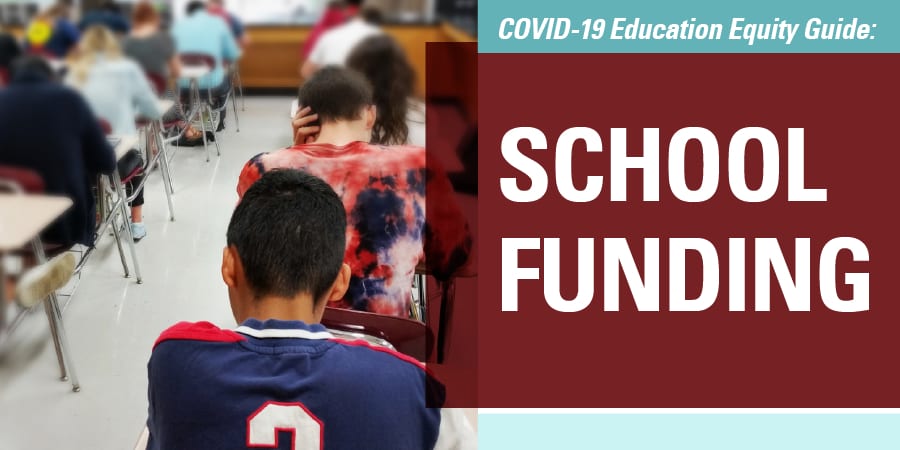COVID-19 Education Equity Guide: School Funding
Research shows that increased school spending leads to higher graduation rates, higher wages, and a reduction in adult poverty,…

Research shows that increased school spending leads to higher graduation rates, higher wages, and a reduction in adult poverty, especially for students from low-income backgrounds. As public schools brace for increased expenses and an unprecedented projected loss of revenue due to the coronavirus pandemic, state leaders are grappling with difficult decisions about how to balance their budgets. While the federal government has provided some stabilization funding to help schools weather the current crisis, we know that it’s a fraction of what’s needed to shore up education budgets. State leaders should work to protect education budgets, which have barely recovered from the last recession. But that won’t be possible in all states.
Unless legislative leaders take a strategic approach to allocating resources and cutting costs, the highest-poverty / lowest-wealth districts are likely to be hit hardest since they are more dependent on state revenue. If state leaders must cut education budgets, they should do it in a way that protects the districts with the most student need and least amount of local wealth.
EQUITY PRINCIPLE: Every student — including students of color, students from low-income backgrounds, English learners, students with disabilities, and students experiencing homelessness — attends school in a state that allocates funding to districts based on the needs of its students, by way of a flexible and transparent funding system.
EQUITY ACTIONS:
States Prioritize Education and Equity in Balancing Budgets
Recognizing the importance of education and the need for early budget actions to allow for planning, state leaders in Pennsylvania passed a budget that protects education funding at last year’s levels – at least through the middle of 2021.
Although Ohio Gov. Mike DeWine chose to reduce funding for K-12 education by $300 million, his administration took an approach that prioritized equity, with the more affluent districts taking larger cuts per student than districts with less local wealth.